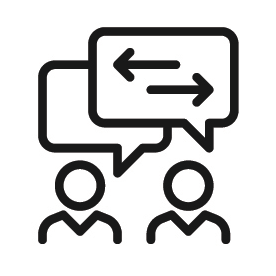Healthcare Data Visualization
Transform Healthcare Data Into Compelling Visual Stories
Healthcare organizations collect vast quantities of complex data from disparate sources, but this data is of limited use if its locked in silos, buried in tables, and lacking context. To get the full value of data, healthcare professionals need the insight provided by data visualization.
Clinicians who are skilled in data visualization tools and techniques can efficiently recognize patterns and identify correlations. They can bring into focus the key points of any dataset and transform complex information into easily interpreted stories. The result is improved patient outcomes, enhanced health delivery system performance, and optimized business operations.
A SELF-PACED Micro-Course
In this asynchronous micro-course, you will learn how to use open source tools to tell data stories. We will examine, cleanse and transform publicly available datasets based on COVID-19 transmission rates. Then we we will recreate – and improve upon – the original visuals that were provided by Georgia's Department of Health.
The course is offered in conjunction with Stony Brook's School of Health Professions and was created and will be led by Dr. Hants Williams, who is both a public health nurse and a data specialist. While the course is self-paced, Dr. Williams will be available for guidance through a Microsoft Teams channel.
Who Should Take This Course
This is a class for practitioners. You do not need to be a data scientist or have specialized knowledge to benefit from this course. The course will have the most value for:
- Physicians, physician assistants, nurse practitioners, nurses, and clinicians
- Healthcare staff in hospitals, medical groups, clinics, and community care centers
- Professionals working in life science, health science, public health, medical insurance, pharma industries, and other related fields
- Data analysts, medical informatics analysts, technical specialists, healthcare consultants, and anyone seeking careers in healthcare analytics
Tools You Will Use
You will learn to use open-source software packages, such as Python and Jupyter Notebooks (Google Colab), along with common data transformation and visualization packages that include Pandas and Plotly.
COurse OUtcomes
By the end of this course, participants will be able to:
- Understand the principles of data preparation, analysis, and visualization in Python
- Know sources and techniques for the acquisition and management of publicly available health data
- Understand the methods and techniques for the visualization of longitudinal, population health data
- Be introduced to common Python visualization libraries (Seaborn, Matplotlib, Plotly) in the creation of visualizations that range from simple to complex
REGISTRATION INFORMATION
Healthcare Data Visualization
Date: This is an asynchronous, self-paced course, so you can start at any time.
Location: Online via Zoom
Price: $65
(SBU alumni and veterans contact sbucce@stonybrook.edu for 10% discount code.) Discounts are not stackable.
In Partnership With
Course Introduction
Dr. Hants Williams
What Students Are Saying

"Dr. Williams and his team have helped me develop a technical skill set that will open up new and exciting opportunities!"
– L.S. Product Manager at Softheon

"Hands down one of the best – very simple and easy to understand. Highly recommend."
– J.Y. Imaging Technologist at New York Presbyterian
Structured Learning
One-on-One Support
Personal and Flexible
![]()
SBU Quality Instruction

Hants Williams, PhD
Instructor
Hants Williams, PhD, RN Program Director of Applied Health Informatics at Stony Brook University
Since 2011, Hants Williams has served his local community as a registered public health nurse. Over the years he has expanded his roles and responsibilities to go beyond that of a traditional nurse. Having served positions that include director of informatics, data scientist, and clinical professor, he has worked on some of the most challenging data problems facing hospital systems, payers, and digital health companies. His primary goal is to always make it about the patient by improving the delivery of patient care and patient outcomes.


